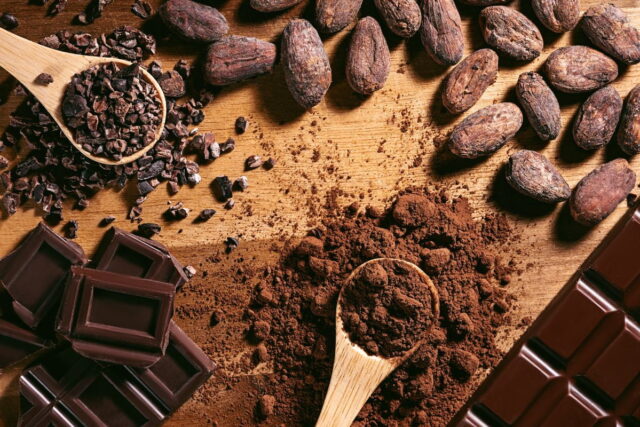Rethinking Cocoa Production
Imagine picking up a nice, juicy apple—but instead of biting into it, you keep the seeds and throw the rest away. That’s what chocolate producers have traditionally done with the cocoa fruit: used the beans and disposed of the rest. Now, food scientists in Switzerland have found a way to use the entire cocoa fruit to make chocolate, all without adding sugar.
A Sweet Innovation
The chocolate was developed at Zurich’s prestigious Federal Institute of Technology by scientist Kim Mishra and his team. Their process includes using the cocoa fruit pulp, juice, and husk, or endocarp. This innovation has already caught the attention of sustainable food companies. Traditionally, only the beans are used, leaving the rest of the cocoa fruit—which is as large as a pumpkin and full of nutrients—to rot in the fields.
The Secret Ingredient
The key to this new chocolate lies in its sweet juice, which tastes “very fruity, a bit like pineapple,” according to Mishra. This juice, containing 14% sugar, is distilled into a concentrated syrup, combined with the pulp, and mixed with the dried husk to form a sweet cocoa gel. This gel, when added to the cocoa beans, eliminates the need for sugar.
The Roots of Swiss Chocolate Innovation
Mishra sees this development as part of a long tradition of Swiss chocolate innovation. In the 19th century, Rudolf Lindt accidentally invented “conching,” a process that rolls warm cocoa mass to make it smooth and sweet. “You need to be innovative to maintain your product category,” says Mishra. “Or… you will just make average chocolate.”
A Partnership for Sustainability
Mishra partnered with KOA, a Swiss start-up focused on sustainable cocoa growing. KOA’s co-founder, Anian Schreiber, believes using the entire cocoa fruit could address many issues in the cocoa industry, such as the high cost of beans and poverty among cocoa farmers. “Instead of fighting over who gets how much of the cake, you make the cake bigger and make everybody benefit,” Schreiber explains.
Challenging Traditional Practices
Schreiber criticizes the traditional system where farmers in Africa or South America sell their beans to large chocolate producers in wealthy countries, calling it “unsustainable.” He argues that using the whole cocoa fruit creates more income for farmers and jobs in the countries of origin.
Switzerland’s Chocolate History
A new exhibition in Geneva examines Switzerland’s colonial past, questioning the ethics of the chocolate industry. Historian Letizia Pinoja notes that while Switzerland didn’t have its own colonies, it played a role in the colonial trade. Geneva has been a hub for the trade of colonial goods, including cocoa, since the 18th century.
A More Regulated Industry
Today, the chocolate industry faces stricter regulations. Producers are expected to monitor their supply chains to prevent child labor. From next year, all chocolate imported into the European Union must guarantee that no deforestation occurred to grow the cocoa used. However, Roger Wehrli, director of the association of Swiss chocolate manufacturers, Chocosuisse, notes that issues like child labor and deforestation persist, especially in Africa.
Promising Developments
Wehrli sees the new whole-cocoa-fruit chocolate as promising. “If you use the whole cocoa fruit, you can get better prices. So it’s economically interesting for the farmers. And it’s interesting from an ecological point of view,” he says. Schreiber also emphasizes the link between food production and the environment, noting that a third of all farm produce is wasted.
The Taste Test
But what about taste? According to a chocolate-loving correspondent, the new chocolate is “surprisingly good,” offering a rich, dark flavor with a hint of cocoa bitterness. However, cost remains a challenge due to the global sugar industry’s influence and subsidies, making cocoa pulp and juice more expensive than sugar.
Looking to the Future
Chocolate producers in countries like Hawaii, Guatemala, and Ghana have shown interest in Mishra’s method. In Switzerland, some major producers, including Lindt, are starting to use the entire cocoa fruit, though none have completely eliminated sugar. “We have to find daring chocolate producers who want to test the market,” says Mishra. “Then we can disrupt the system.”
A Bright Future for Chocolate
The Swiss chocolate industry produces 200,000 tonnes of chocolate annually, worth an estimated $2 billion. Despite challenges, Wehrli believes chocolate will continue to thrive, fueled by a growing global population. And when asked if they’ll be eating Swiss chocolate, his answer is unequivocal: “Obviously.”
References:







